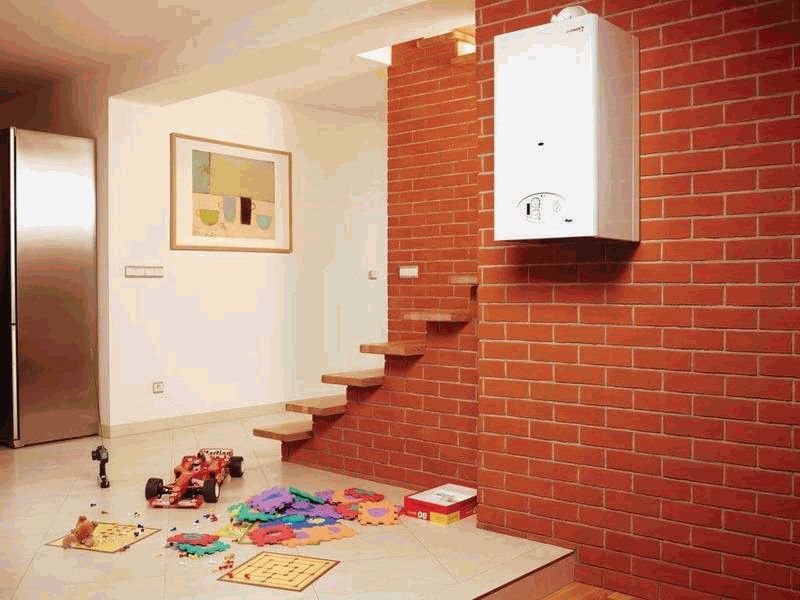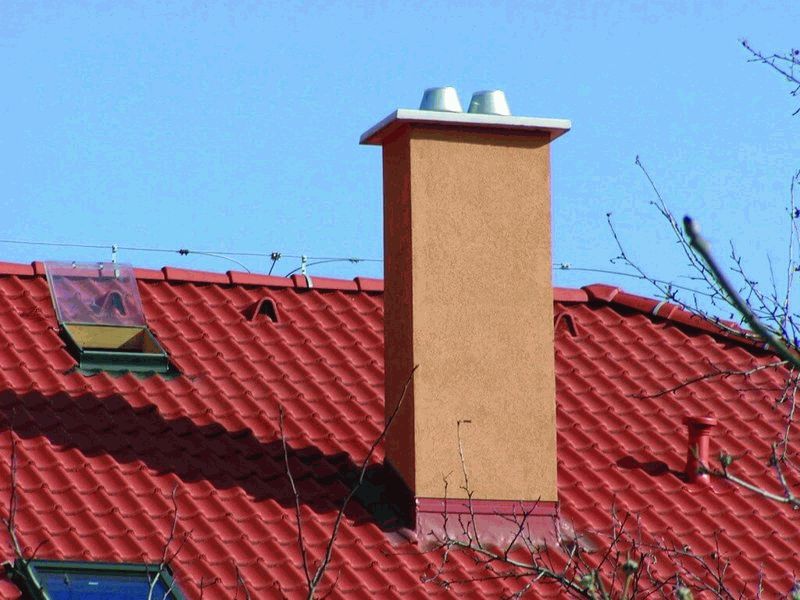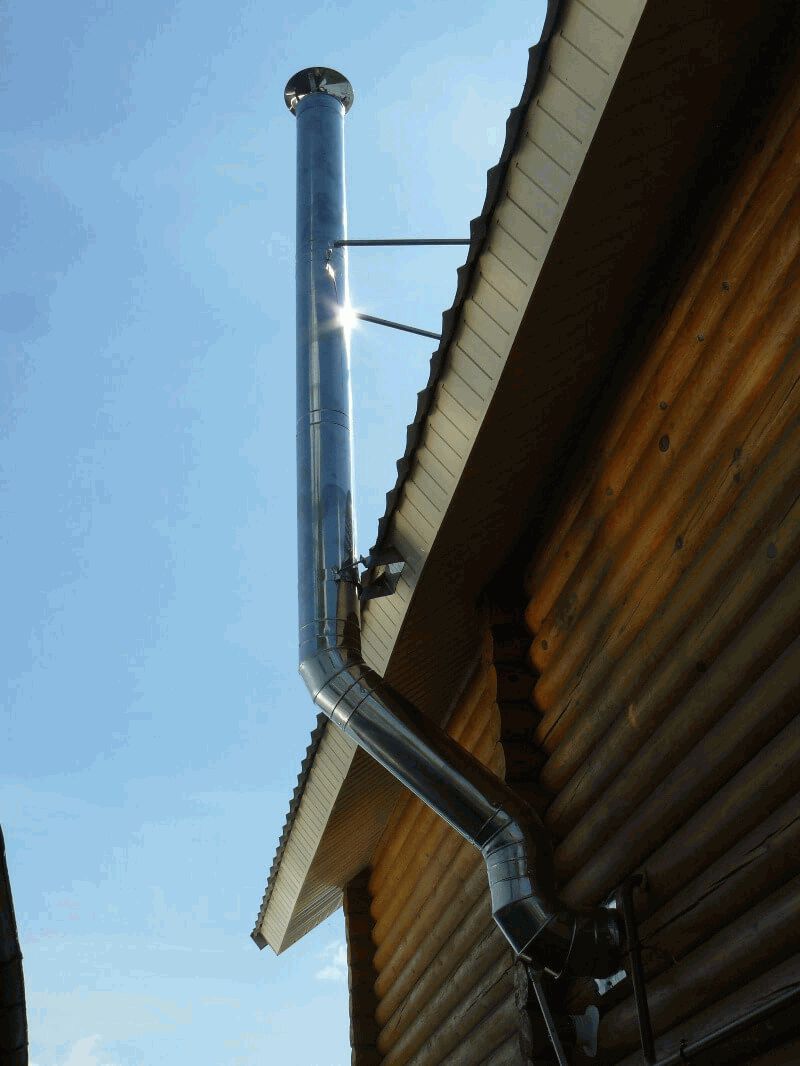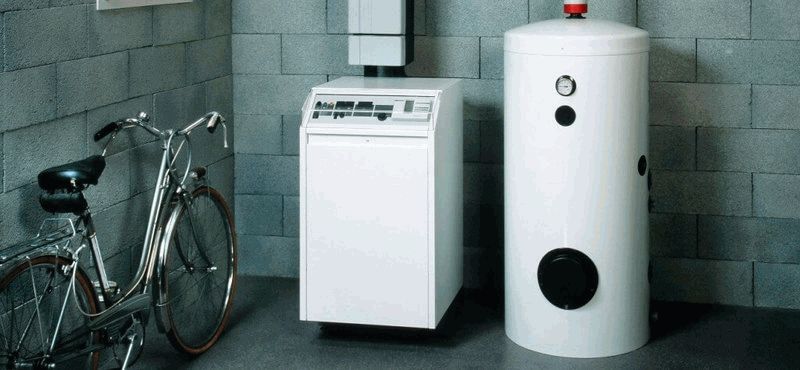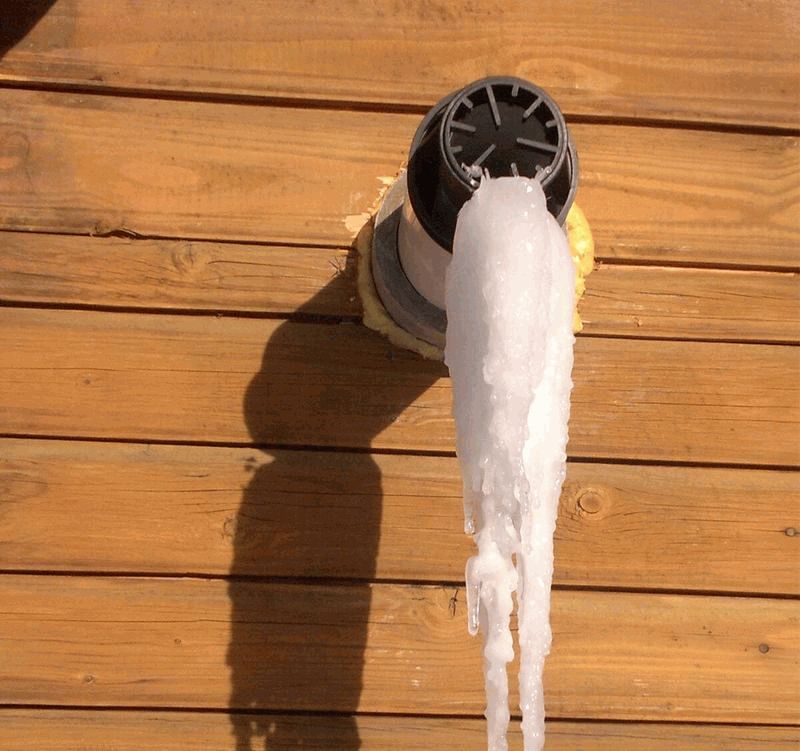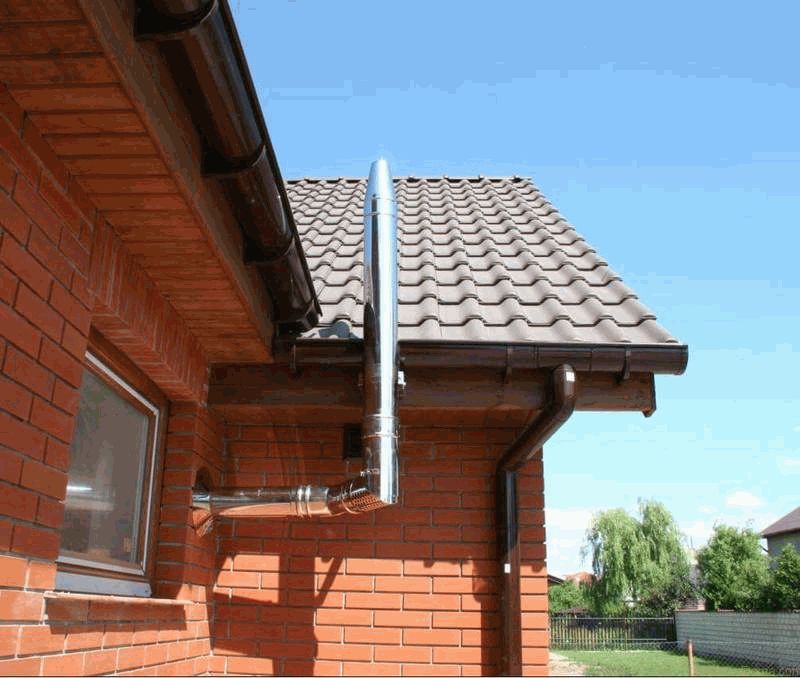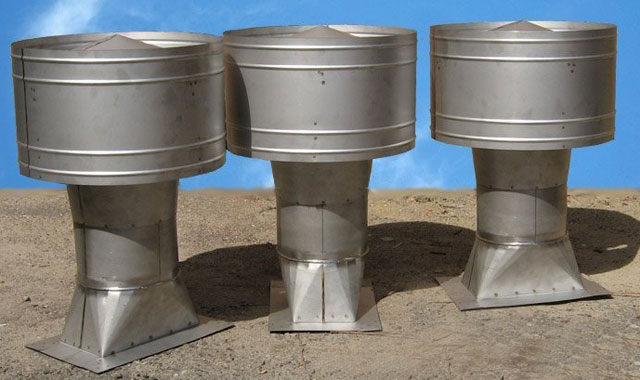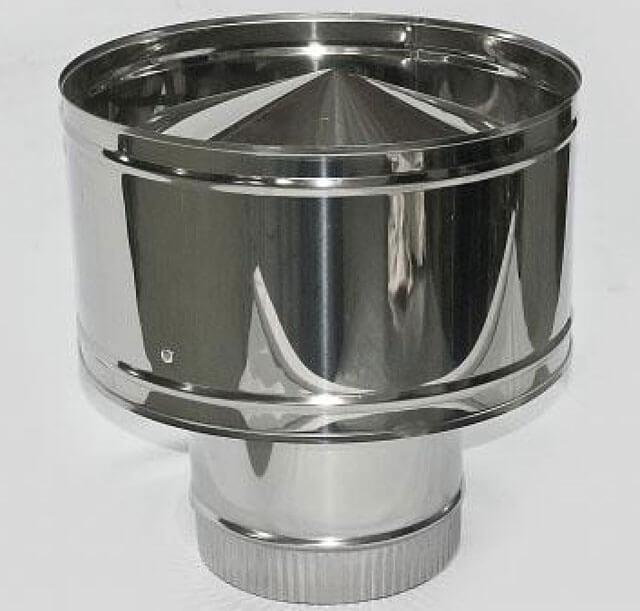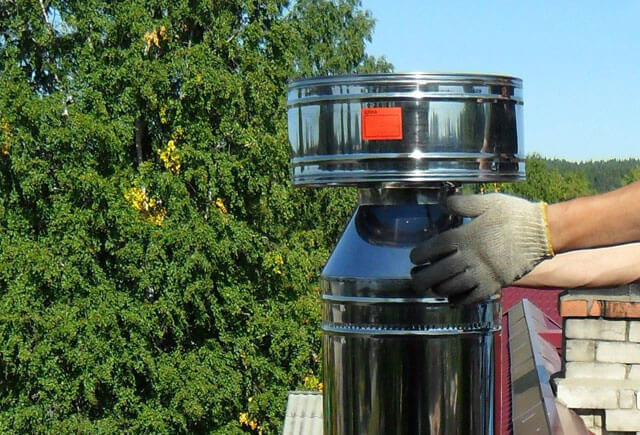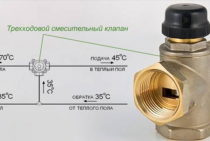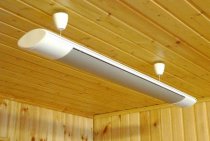The gas boiler blows with the wind what to do
Often the reason for stopping the operation of a gas heating boiler is wind blowing. Its shutdown in winter is a very unpleasant surprise for the owners. This can lead not only to a sharp decrease in the temperature inside the house, but also damage to the entire heating system. Let's deal with the problem.
If your gas boiler unexpectedly turns off, do not panic and first exclude such a possible reason as a sharp decrease in gas pressure in the pipeline. To do this, you can simply turn on the gas stove and look at the flame, its size, check how quickly the water boils. You will immediately notice low gas pressure on the hob. In this case, your boiler is definitely not to blame, call the gas workers and find out the causes of the problem. Most likely, it is not only with you, but also with all the neighbors.
In addition, check and eliminate the possibility of gas leakage - using a soapy solution, which is applied with a sponge or spray gun to the joints of pipes and parts. No smell and no bubbles - so it's not a leak.
However, often the reason for turning off the gas boiler is obvious - there is a hurricane wind outside, which simply whistles in the pipes. Strong gusts of wind, falling into the chimney, cause reverse draft, the valve is activated, and the flame in the boiler automatically goes out.
Thinking about preventing the risk of blowing out the boiler should be at the stage of installing the chimney. It is highly desirable to take into account the wind rose in your area. An incorrectly located chimney relative to the wind backwater zone significantly increases the risk of blowing out the boiler burner. Incorrect chimney configuration can also cause this problem.
The deflector installed on the head of the chimney copes well with the problem of blowing out the boiler. This is a fairly simple design that enhances draft in the chimney, protects it from precipitation and blowing. Be sure to think about installing a deflector or immediately purchase a design with such a device.
Important! Actions with gas equipment require coordination with the relevant service. Therefore, before installing a deflector or wind vane, consult with the gas workers
The cause of blowing out a gas boiler can also be a burnout of a metal chimney pipe. As a result of burning, a hole is formed where the air flow enters - there are problems with the chimney. Only replacing the pipe will help to cope with the situation. In the case of coaxial chimneys, there is no risk of burnout, because the hot gas from the boiler goes through the inner pipe, being cooled by the oncoming cold air flow.
Two more possible reasons for blowing out a gas boiler:
Formation of frost on the chimney. This often happens with coaxial structures in frost -10..-15 °C. Hot steam leaves the chimney, gradually cools, turns into water droplets, condensate, which freezes, forming icicles and a thick layer of ice. This leads to a violation of traction, the boiler automatics work, it stops work. If such a problem arises, do not rush to knock down the ice build-up - you can damage the chimney itself. It is best to remove the head, the upper part of the pipe and bring it into a warm room so that the ice melts naturally. Before removing and cleaning the pipe, the gas supply must be shut off! Helps to avoid the appearance of frost additional insulation of the chimney;
Poor ventilation in the boiler room can lead to problems with the operation of the atmospheric boiler. The arrangement of forced ventilation in the room or a fine mesh hole in the lower part of the boiler room door will help.
They help to cope with the blowing of the boiler by manipulating the pipe - the diameter of its outlet can be reduced or increased in length. An oversized chimney opening can be reduced by installing an additional inner pipe. Remember that the vertical chimney must be 50 cm higher than the roof ridge.
At the same time, too long a chimney can cause excessive, strong draft, which will literally tear off the flame from the boiler burner.
We strongly advise you to call specialists in case of problems in the operation of the gas boiler! Only they will be able to accurately determine the cause of the device shutdown and eliminate it.
Installation of a special deflector
To achieve the maximum result when solving the problem of what to do if the boiler goes out in the wind, a deflector of a special design allows - an aerodynamic device installed on the chimney.
In a simple deflector, the main function is performed by the outer part, which is affected by the air flow. At the point of contact of the air flow with the surface, a rarefaction zone is created, which increases the draft in the chimney channel. As a result of using a simple deflector, traction can be increased by 15-20 percent. Therefore, devices with a more complex design will be much more effective.
Complex structures are installed in the case when the use of a conventional deflector does not help solve the problem of blowing the boiler with gusts of wind. From a large number of deflectors of complex design, several types are distinguished, which are most often found in the consumer market:
- Deflector "Smoke tooth".
- Grigorovich deflector.
- Deflector "Voller"
- Deflectors are spherical and rotating.
The leader among the listed options is the Grigorovich deflector, so a little attention can be paid to its device.
This device has a special design, in which every contour and element is directly related to aerodynamics. If a simple deflector installed on a pipe of a private house is made in the form of an umbrella, then the Grigorovich deflector is distinguished by the presence of a direct and reverse cone. Due to their interaction, the necessary movement of air flows is created, as a result of which a zone of low pressure is created around the chimney. The different temperature of the hot and cold air flows greatly increases the draft in the chimney and prevents the penetration of air from outside into the pipe.
Deflectors, having a complex design, force strong gusts of wind to work to increase draft in the chimney. In any case, air masses fall under the lower cone of the deflector and suck in the flow coming from the boiler into the chimney.
The correct location and arrangement of the chimney, combined with a deflector of complex design, allows you to solve the problem of reverse draft. Due to this, gusts of wind of any strength do not blow out the flame of the heating boiler burner, but only increase the draft in the chimney channel, allowing the equipment to work more efficiently.
Particular attention should be paid to the situation when the gas boiler goes out during the wind, and the start of the heating system does not give a positive result. In this case, the cause is an insufficiently heated chimney.
Country houses and cottages are rarely visited, so the heating system does not function for a long time. As a result, the first start-up of the heating boiler does not lead to anything, the burner flame dies out after a short period of time. Many owners are wondering what is the reason for this behavior of gas heating equipment. The fact is that the spent combustion products with great difficulty rise up the cold chimney, and a gust of wind of any intensity does not allow the channel to warm up.
To solve a problem of this type, it is necessary to turn on the boiler at minimum power and warm up the chimney channel.In this case, the power of the device gradually increases to certain values. As a result, the hot stream with the combustion products of the fuel rises naturally.
When creating an efficient heating system in a private house, well-executed calculations are of great importance when drawing up a project.
However, the ventilation system in this case is no less important. Properly selected design and high-quality installation of ventilation will ensure uninterrupted operation of heating equipment
Saving on exhaust and ventilation when deciding what to do so that the boiler does not blow out can give a negative result during operation
Therefore, special attention should be paid to the ventilation system when planning the house, otherwise the aesthetic appearance may turn into discomfort in the winter. There will be a need to re-equip the chimney channel and climb the roof in any frost
https://youtube.com/watch?v=QFqyaaim-HE
Making a deflector
The simplest version of the Volpert-Grigorovich type deflector is quite easy to make with your own hands.
Required tools and materials
- Marker or marker.
- Ruler.
- Iron scissors.
- Kiyanka.
- Wooden beam for the stand.
- Riveting device.
- Drill, drill bits for metal (or - drill-tipped self-tapping screws).
- A sheet of galvanized iron with a thickness of 0.3–0.5 mm (aluminum sheet or thin stainless steel is suitable).
- Metal parts that are available: corner, studs, thick wire and the like.
Calculation of dimensions and scheme
Since the quality of the deflector depends on the accuracy of manufacturing, drawing up the correct drawing is the most important step in the entire process. The dimensions were verified by scientists in a wind tunnel, and they must be followed. The parameter to be based on is the diameter of the chimney channel D.

The dimensions of all parts of the deflector are set in proportion to its diameter
Table: dimensions of the deflector parts relative to its diameter
| Indicator | Diameter ratio |
| Lower diffuser diameter | 2 |
| Upper diffuser diameter | 1,5 |
| diffuser height | 1,5 |
| Deepening the pipe into the diffuser | 0,15 |
| cone height | 0,25 |
| umbrella height | 0,25 |
| reverse cone height | 0,25 |
| Gap between umbrella and diffuser | 0,25 |
Instructions for making a deflector with your own hands
-
We transfer the drawn details to cardboard and make a cardboard layout. We check the correspondence of the parts to each other.
- Opening the layout back. This cardboard pattern, laid on a galvanized sheet, is circled with a marker.
-
Cut out all the details with iron scissors.
- We turn the casing and drill holes in its edges.
- We fasten the casing with rivets (or do not drill and do not fasten, but use drill-end screws).
-
In the same way, we fasten the lower and upper cone plates in turn.
- The top cymbal is larger, so we cut out 6 tabs on its edge to attach to the bottom cymbal.
- We attach studs to the bottom plate for connection with the casing.
-
We fasten them to the casing of the umbrella.
- To fix the finished deflector on the chimney, it is better to separate the top of the pipe and connect it to the deflector on the ground. The strength of this connection is extremely important. The wind load at altitude will be great and can get in the way.
The deflector may not turn out to be very beautiful, but you will immediately feel its usefulness: the draft will increase by a quarter, the roof will be protected from sparks. The pipe with it can be lower by one and a half to two meters.
Video: self-manufacturing of the TsAGI deflector
When installing any traction booster, you will immediately feel the benefits. But a self-made deflector will also create a weighty reason to make you proud of yourself.
Reconstruction of the chimney is one of the solutions to the problem
The first sign of a permanently fading flame is an improperly designed chimney.It makes no sense to look for other reasons why the gas floor boiler blows out in the wind with such equipment. The gas supply is carried out under constant pressure, there are almost no significant drops. Any equipment malfunctions are unlikely, as modern boilers are reliable and simple in design. For example, the Conord boiler is known for its reliability and performance.
As for the chimney, here the answer to the question of why the boiler blows out in a private house can be called such moments:
The ventilation channel of the heater is covered with an ice crust. As a result, the air circulation inside the chimney is disturbed and the gas boiler does not receive enough oxygen. In addition, water vapor enters the chimney channel, which is cooled from the ice layer and forms condensate. In turn, water drops freeze on the walls of the chimney and the ice crust grows. To solve the problem of what to do so that the gas boiler does not blow out, the insulation of the chimney channel helps. In this case, the resulting condensate will flow down the walls.
The occurrence of back draft due to insufficient height of the chimney. The increasing or changing direction of the wind creates a strong air flow that enters the chimney channel and reaches the combustion chamber. As a result, the flame in the burner is extinguished.
This situation is considered more dangerous, so it is important to know what to do when the boiler blows out in strong winds. The reverse movement of warm air captures the combustion products along the way, therefore, they enter the boiler and pollute the combustion chamber
It is not excluded the ingress of harmful gases into the living quarters.
